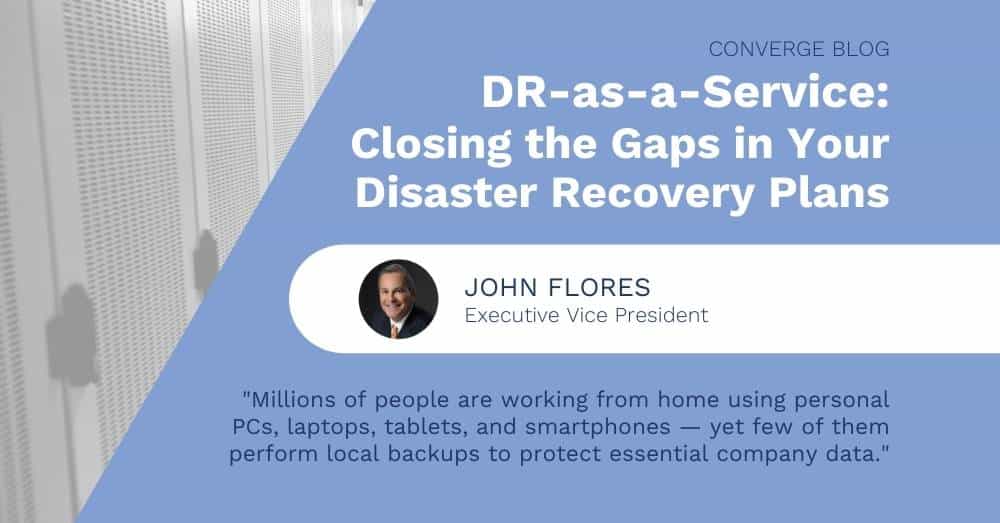The pandemic triggered broad changes in the way businesses operate. In the process, it also exposed serious gaps in disaster recovery (DR) planning. Cloud-based DR-as-a-Service (DRaaS) solutions can close those gaps and provide improved protection for your essential data, applications, and services.
The rapid transition to remote operations, including the rushed migration of applications to the cloud and the emergency provisioning of devices and services for employees working from home, created challenges that few organizations anticipated when they were developing DR plans. Conventional plans that focused on ensuring system and data availability offered little guidance on how to support a widely distributed workforce for months or years at a time.
Another particularly troublesome issue with remote operations has been data protection. Millions of people working from home started using personal PCs, laptops, tablets, and smartphones, yet few of them perform local backups to protect essential company data. Additionally, surveys found that only about 15 percent of companies are backing up their data in SaaS applications and cloud infrastructure.
Unproductive Efforts
Over the past few months, organizations have increased their investments in new systems and tools in an effort to improve remote data protection. However, a new global study suggests these investments are not paying off. According to the study, 80 percent of companies now run as many as 10 different data protection solutions — yet more than half of them still suffered unexpected downtime last year because of data loss.
As more businesses realize the shortcomings of their existing DR plans, they are likely to turn to DRaaS solutions that provide robust data protection with subscription-based pricing. Analysts with ResearchAndMarkets predict the global market for DRaaS will grow by 40 percent annually over the next five years.
DRaaS solutions provide increased protection for remote operations by extending data protection across your entire organization, including data centers, cloud platforms, edge servers, and endpoint devices. It allows you to centrally back up remote computers from a single console no matter where workers are located. Agents installed on remote desktops, laptops, and smartphones copy data directly to the DRaaS provider’s cloud infrastructure where it can be easily accessed and quickly restored when necessary.
Additional Benefits
DRaaS solutions provide more than backup and replication. Many providers now apply continuous data protection and monitoring to ensure rapid detection of outages or breaches. In some cases, the solution will automatically initiate failover, which eliminates manual processes and significantly speeds up the restoration of data and services. Some providers also offer additional services such as DR planning and testing and ongoing management and support.
DRaaS reduces cost and complexity. In-house DR solutions require organizations to duplicate the entire production infrastructure and associated operational processes, which requires organizations to purchase equipment and dedicate IT resources to maintain that equipment and manage the DR solution. DRaaS shifts this overhead to a third-party service provider. There is no hardware or software to purchase or data center space to acquire. The DRaaS model also enables a great deal of flexibility by allowing customers to spin up new virtualized resources in a matter of minutes.
As with any “as-a-service” offering, organizations must do their due diligence when selecting a provider. Key considerations include recovery time objectives (RTOs), recovery point objectives (RPOs), and service-level agreements. If regulatory compliance is a factor, organizations should look for a provider that stores data only in a SSAE 16-certified data center and follows applicable operational standards.
Organizations around the world have had to adapt many of their processes to accommodate remote work requirements, and disaster recovery planning is no exception. By switching to a DRaaS solution, companies can improve the efficiency of their data protection processes while reducing cost and complexity. We’d welcome the opportunity to discuss how DRaaS can support your business requirements.




